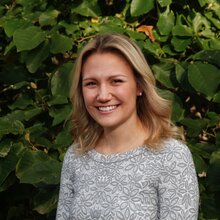Living with an invisible disease: Primary Ciliary Dyskinesia
Lars is a five-year-old boy who loves superheroes, AC/DC, and looks at life with a happy, glass half-full attitude.
He also happens to have a rare condition affecting the cilia that line many parts of his body.
“He's so happy and charismatic. He’s smart, he’s witty and a lover of life,” his mother Risha, said of her resilient son.
In May of 2023, Lars was diagnosed with Primary Ciliary Dyskinesia (PCD).
PCD is when the tiny hair-like structures (cilia) that line the surface of many parts of the body do not move properly or at all, impairing the ability to remove germs and pollutants from the lungs, sinuses, ears and other parts of the body. This results in mucus build-up and can lead to potential infection, respiratory failure and hearing loss.
PCD is a rare genetic, chronic, and progressive disease that currently has no cure. Management is focused on symptom relief and slowing the progression of disease damage.
Living With PCD

Lars is a happy child, who loves to engage in physical activity, something that is critical to helping his lungs stay as healthy as possible. It can be hard to fit it all in, Risha explained. Having multiple sessions of breathing exercises, and working on his speech delays, can make planning tricky. But ensuring that Lars can participate in all aspects of life is very important to their family.
“He understands that he needs a little extra work to keep healthy,” Risha noted. “We try to explain to him that everyone has something, this is just his something.”
While PCD is primarily a respiratory disorder, it can manifest in other ways; for Lars, one of the complications is hearing loss.
Lars gets his hearing checked every three months to ensure that it has not progressed or gotten worse. At this point, Risha explained that in one-on-one conversations, Lars can hear and engage well. He struggles more in loud or noisy settings, such as his kindergarten classroom, where there are many things happening at once. This can make it hard to hear his name called or have a conversation with a classmate. Further, Lars is also a little delayed in his speech as a result of the hearing loss.
That said, his school and his teacher have been great and very proactive in learning about PCD and figuring out ways to help Lars where is needed. Currently his teacher is wearing a microphone which is amplified in the classroom, and this seems to help significantly.
“It is hard.” Risha said of the process. “We feel very lucky that we are based in the Lower Mainland. I believe from a diagnosis perspective it would have been difficult and may not have happened if we weren't here. We are extremely grateful, to be close BC Children’s Hospital, where there is a team of specialists and nurses dedicated to PCD.
Awareness of Rare Diseases
Lars is currently 1 of only 44 kids in British Columbia that have been diagnosed with PCD. To help try to prevent further lung damage, Lars’s daily routine includes two 40-minute sessions, one in the morning and one in the evening, that work on airway and lung clearance along with multiple nasal rinses throughout the day. These treatments are coupled with regular trips to BC Children’s Hospital in Vancouver to monitor his health, lung function, and hearing.
Lars’ family wants to make progress on research and awareness for PCD. By sharing information and teaching others about PCD, they hope research can make steps forward.
While PCD is primarily a respiratory disease, it is important to understand how it impacts other functions. For example, an increase in lung damage can lead to a long list of other bodily and mobility-based complications. It is important to maintain awareness of how these rare diseases manifest in other ways.
“Don’t stop advocating for your child or yourself,” Risha responded when asked about what she wants others going through a similar process to know. “If you're child or you are experiencing any of the symptoms, and the treatments prescribed are not working, push to see specialists. It’s exhausting, but don’t stop. It was only when we started to do our own research, things began to click, we had to push hard for the referral to BC Children’s Hospital and very glad we did”.
Road to Diagnosis

When Lars was born, he spent nearly a month in the neonatal intensive care unit (NICU) to help his breathing before he was sent home after being treated for what was believed to be pneumonia. Over the next three years Lars went through a battery of tests, saw many different doctors, and was misdiagnosed with asthma, had his tonsils and adenoids removed, and 2 sets of ear tubes put in, before finally seeing a specialist.
Soon after the diagnosis Lars was checked into BC Children’s Hospital for a bronchoscopy where it was discovered he had a partially collapsed lung. Following this procedure Lars spent a week in hospital receiving IV antibiotics and doing 3-4 lung and airway clearance sessions a day.
For Lars, the damage that has been done through the PCD has resulted in Bronchiectasis, the thickening of the bronchi in the lungs due to inflammation, and hearing loss.
“Rare diseases suck," Risha said in a Facebook post. "There is often very little known about them, and funding is limited.”






